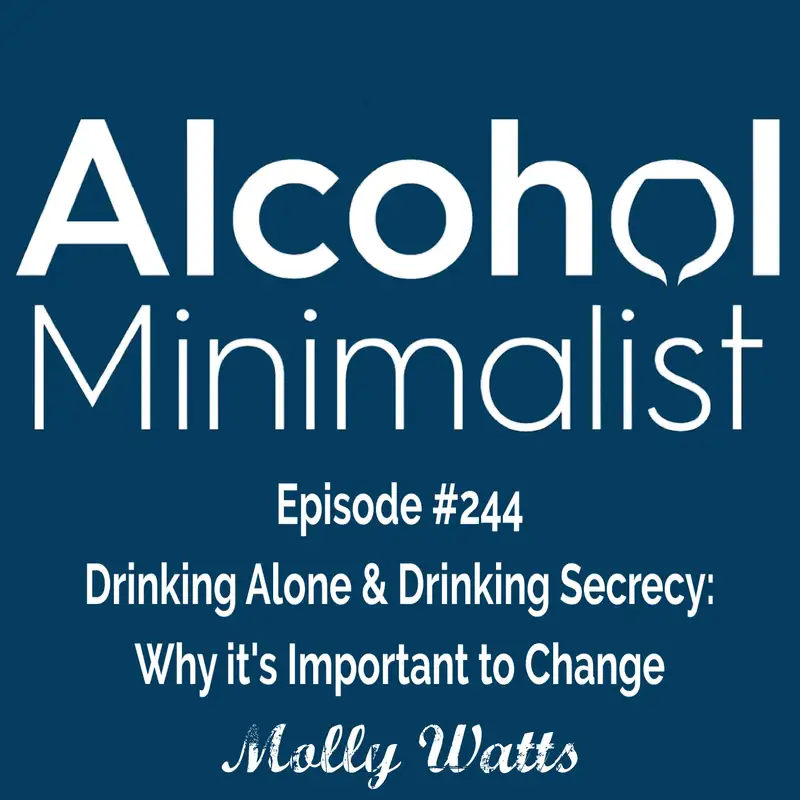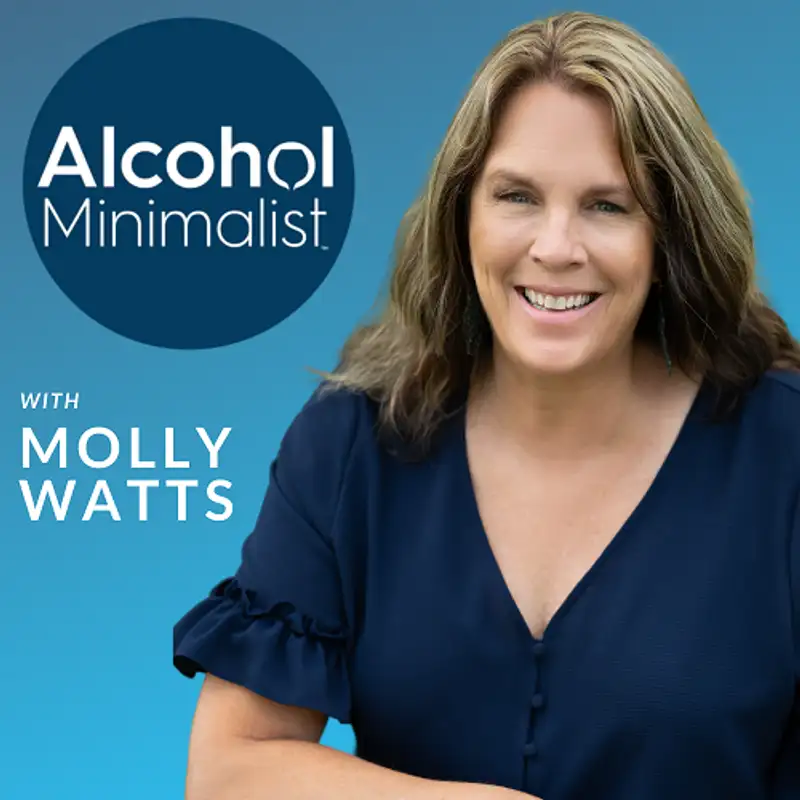Drinking Alone & Drinking Secrecy: Why It's Important to Change
In this episode of the Alcohol Minimalist podcast, Molly explores two common behaviors that often fly under the radar but can quietly reinforce problematic patterns with alcohol: drinking alone and drinking secrecy.
These habits are not diagnoses of alcohol use disorder, but research shows they are correlated with higher risk, especially when alcohol becomes the go-to coping strategy for stress, boredom, or loneliness. Molly explains what these patterns can look like, what the science actually says, and how to notice if they are showing up in your own life.
You will learn:
- Why drinking alone is not automatically a problem, but can become risky when it is habitual or emotionally driven
- How drinking secrecy shows up, from subtle minimizing to not being truthful with yourself about how much you are drinking
- What studies tell us about the link between these behaviors and alcohol use disorder
- Why living alone creates unique challenges when it comes to alcohol habits
- Six practical, science-based strategies for disrupting automatic patterns and building awareness
- A free self-check tool from the National Institute on Alcohol Abuse and Alcoholism (NIAAA) that can help you reflect honestly on your drinking
If you have ever wondered whether drinking alone or minimizing your drinking is impacting your relationship with alcohol, this episode offers clarity and compassion along with practical steps you can take right away.
Resources mentioned in this episode:
- NIAAA Self-Assessment Tool: Rethinking Drinking
- The PB and J strategy
- The Alcohol Minimalist Facebook Group
Low risk drinking guidelines from the NIAAA:
Healthy men under 65:
No more than 4 drinks in one day and no more than 14 drinks per week.
Healthy women (all ages) and healthy men 65 and older:
No more than 3 drinks in one day and no more than 7 drinks per week.
No more than 3 drinks in one day and no more than 7 drinks per week.
One drink is defined as 12 ounces of beer, 5 ounces of wine, or 1.5 ounces of 80-proof liquor. So remember that a mixed drink or full glass of wine are probably more than one drink.
Abstinence from alcohol
Abstinence from alcohol is the best choice for people who take medication(s) that interact with alcohol, have health conditions that could be exacerbated by alcohol (e.g. liver disease), are pregnant or may become pregnant or have had a problem with alcohol or another substance in the past.
Abstinence from alcohol is the best choice for people who take medication(s) that interact with alcohol, have health conditions that could be exacerbated by alcohol (e.g. liver disease), are pregnant or may become pregnant or have had a problem with alcohol or another substance in the past.
Benefits of “low-risk” drinking
Following these guidelines reduces the risk of health problems such as cancer, liver disease, reduced immunity, ulcers, sleep problems, complications of existing conditions, and more. It also reduces the risk of depression, social problems, and difficulties at school or work.
★ Support this podcast ★
Following these guidelines reduces the risk of health problems such as cancer, liver disease, reduced immunity, ulcers, sleep problems, complications of existing conditions, and more. It also reduces the risk of depression, social problems, and difficulties at school or work.

